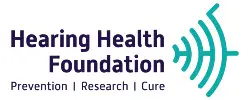Introduction
The world of sound enriches our lives in countless ways, from the melody of a favorite song to the comforting hum of familiar voices. But what happens when these sounds start to fade or become distorted? For millions of people worldwide living with conductive hearing loss, this is a part of their everyday reality. This blog post aims to shed light on the subject of conductive hearing loss – an often misunderstood but surprisingly common auditory condition.
Conductive hearing loss occurs when the transmission of sound from the external ear to the inner ear is obstructed or diminished. This can result from a variety of causes, each leading to a unique set of challenges and requiring different treatment approaches. Understanding the intricacies of this condition can empower individuals with the knowledge to seek appropriate help and manage their hearing health effectively.
It’s essential for everyone, not just those with hearing loss, to comprehend this condition. It promotes empathy and understanding, making our society more inclusive for those with auditory challenges. In the following sections, we’ll delve into the causes, symptoms, treatment options, and the anatomy of the ear related to conductive hearing loss.
Our journey of understanding begins with a closer look at the basics of conductive hearing loss. By demystifying this condition, we aim to provide a source of support and information for those affected and to foster a more inclusive society for all.
Prof-ReChargeable-Hearing-Aid
Experience Exceptional Sound Quality with Vivtone RIC02, a professional RIC hearing aid featuring a receiver in the canal design. Enjoy superior sound fidelity, reduced distortion, and minimal feedback. With a remarkable 51dB peak sound gain, it surpasses many other devices, catering to a wide range of hearing loss levels.
State-of-the-Art Technology awaits you with Vivtone RIC02. Designed with US-made components from renowned brands like Intricon and Knowles, this advanced device offers exceptional quality at a fraction of the cost. The built-in 30mAh steel-sealed lithium polymer battery charges rapidly in just 1.5 hours and provides an impressive battery life of over 20 hours.
Reliability and Water Resistance come hand in hand with the Vivtone RIC02. Secure your device with the included lanyard and clip, preventing accidental loss. With an IP65 rating, these hearing aids are resistant to water, sweat, and raindrops, assuring longevity and durability. Give the perfect gift to your seniors and loved ones, as this device combines functionality with an appealing appearance and packaging.
Understanding Conductive Hearing Loss: An Introduction
Conductive hearing loss is one of the main types of hearing impairment, the others being sensorineural hearing loss and mixed hearing loss. This condition arises when sound is not effectively conducted through the outer ear canal to the eardrum and the tiny bones, or ossicles, of the middle ear.
The process of hearing involves a remarkable journey. Sound waves enter the ear canal and cause the eardrum to vibrate. These vibrations are then transferred through the ossicles to the fluid-filled cochlea in the inner ear. Here, the vibrations become nerve impulses that the brain interprets as sound. However, in conductive hearing loss, this process is hindered, and sounds may become muffled or faint.
The degree of conductive hearing loss can vary from mild to severe, and it can affect one or both ears. Importantly, this type of hearing loss is often temporary and reversible, depending on its cause. Treatment can lead to a complete or partial restoration of hearing function.
SUDDEN HEARING LOSS – SYMPTOMS, CAUSES AND TREATMENTS
Causes and Risk Factors of Conductive Hearing Loss
Conductive hearing loss can be attributed to various causes and risk factors. One of the most common is blockage of the ear canal, which can occur due to earwax accumulation, the presence of a foreign body, or a growth in the ear canal.
Infections or diseases can also play a role. Otitis media, an infection or inflammation of the middle ear, is a frequent cause of conductive hearing loss. It often leads to the accumulation of fluid in the middle ear, impairing sound transmission. Otosclerosis, a condition characterized by abnormal bone growth in the middle ear, can also cause conductive hearing loss.
Trauma to the ear can lead to conductive hearing loss as well. This includes any injury that affects the ear canal, eardrum, or ossicles. Even barotrauma, resulting from rapid changes in air pressure, can lead to this type of hearing loss.
Certain risk factors can increase the likelihood of developing conductive hearing loss. These include a history of frequent ear infections, living or working in a loud environment, and having a genetic predisposition for conditions like otosclerosis.
Symptoms and Diagnosis of Conductive Hearing Loss
People with conductive hearing loss often report that sounds seem muffled or faint. They may find themselves frequently asking others to repeat themselves, turning up the volume on the TV or radio, or struggling to hear in noisy environments.
Physical symptoms can also be present. Depending on the underlying cause, symptoms may include ear pain or discomfort, a feeling of fullness in the ear, or even discharge from the affected ear.
Diagnosing conductive hearing loss begins with a thorough medical history and a physical examination of the ear. The healthcare provider will look for any visible abnormalities in the ear canal or eardrum. A hearing test, or audiogram, is typically used to confirm the diagnosis. This test measures the patient’s ability to hear sounds at various frequencies and volumes.
Treatment Options for Conductive Hearing Loss
Treatment for conductive hearing loss depends on the cause. In cases where the loss is due to a blockage in the ear, removal of the obstruction can often restore hearing. This might involve cleaning out impacted earwax or removing a foreign object from the ear canal.
If an infection is the culprit, medications such as antibiotics or antifungal treatments may be prescribed. In cases of chronic otitis media, surgical intervention might be required to drain fluid and alleviate pressure from the middle ear.
For conditions like otosclerosis, surgery can be a viable option. A common procedure, called a stapedectomy, involves replacing the stapes bone in the middle ear with a prosthetic device, allowing sound waves to reach the inner ear more effectively.
It’s important to note that not all conductive hearing loss can be completely reversed, but most cases can be significantly improved with appropriate treatment. In instances where the hearing loss cannot be reversed, hearing aids or other amplification devices can be beneficial.
Tinnitus: why it’s still such a mystery to science
The Anatomy of the Ear: How Conductive Hearing Loss Occurs
To fully understand conductive hearing loss, a basic understanding of the ear’s anatomy is beneficial. The human ear is a complex organ, composed of three main sections: the outer ear, the middle ear, and the inner ear.
The outer ear, consisting of the visible part of our ear (the pinna) and the ear canal, collects sound waves and directs them to the eardrum. The middle ear contains three tiny bones, known as the ossicles, which transmit these vibrations to the inner ear.
The inner ear houses the cochlea, a spiral-shaped organ filled with fluid and lined with hair-like cells. These cells respond to the vibrations by generating electrical signals, which are then sent to the brain via the auditory nerve.
Conductive hearing loss occurs when there’s a problem in the outer or middle ear that prevents sound from being efficiently transmitted to the inner ear. This could be due to blockages, damage, or diseases affecting these parts of the ear.
Conclusion
Conductive hearing loss is a prevalent condition affecting a significant proportion of the population. It’s a multifaceted condition with various causes and manifestations, yet it shares a common feature: the diminished or obstructed transmission of sound from the outer to the inner ear.
Understanding the intricacies of conductive hearing loss — its causes, symptoms, treatments, and the anatomy involved — is instrumental in empowering those who live with this condition. Knowledge equips individuals to seek appropriate help, advocate for their needs, and make informed decisions about their hearing health.
Remember, if you or someone you know is experiencing symptoms of hearing loss, it’s crucial to seek medical attention. Early diagnosis and intervention can significantly improve the outcome and quality of life for those with conductive hearing loss.
The journey to better hearing health begins with understanding. As we deepen our knowledge and awareness of conditions like conductive hearing loss, we become better equipped to support those affected and make our world more inclusive and empathetic.

Otofonix Groove: Revolutionizing Hearing with Bluetooth Technology
Meet the Otofonix Groove, a groundbreaking addition to the world of hearing
Harmonizing Life with Sensorineural Hearing Loss: A Guide for Seniors and Beyond
Sensorineural hearing loss is a common condition that affects various sections of our society. However, as we’ve seen through the stories of Alice, John, Sarah, Alex, and Emily, the condition doesn’t define them; their strength, resilience, and determination do. The courage of these individuals should inspire us to promote awareness, facilitate early detection, and foster inclusivity in our environments.






